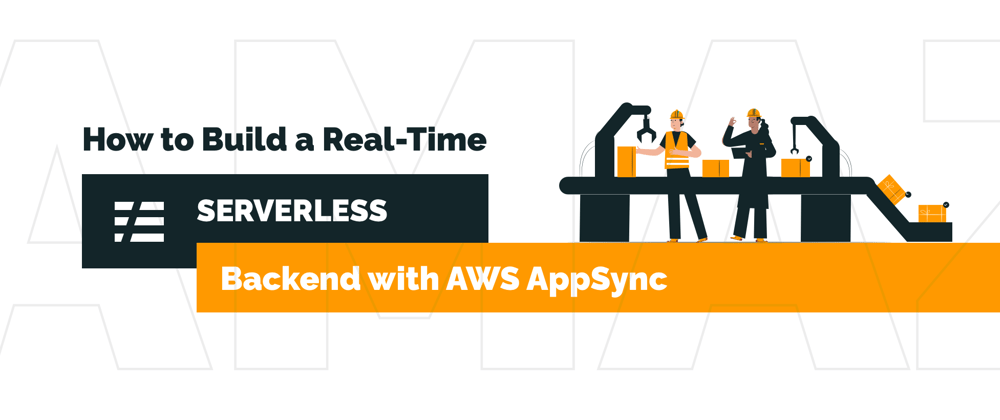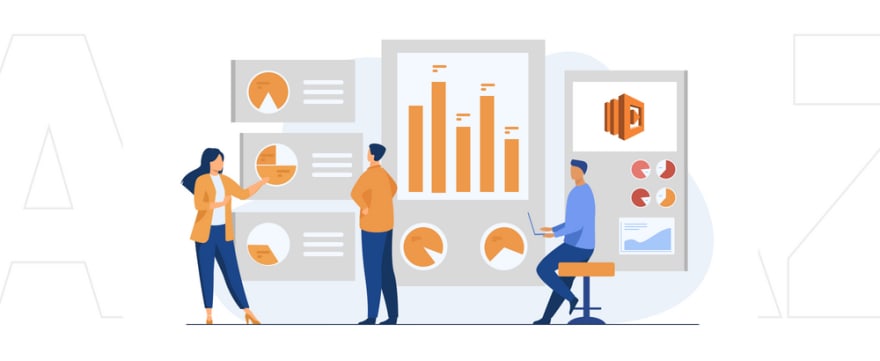Modern life requires easy instant data access, along with immediate notifications and updates. People are accustomed to real-time applications where they don’t need to refresh anything but instead receive automatic changes and requests. Due to their convenience and time-saving quality, real-time applications have become extremely popular among users as well as developers. Soon enough, platforms that do not provide real-time requests will lose to the competition and go extinct.
But how do you make sure your app offers good performance after it gets more and more users? Real-time applications require high scalability, which can be achieved with AWS AppSync. AWS AppSync is a serverless solution that allows you to build scalable real-time applications and take advantage of the optimized GraphQL layer at the same time.
What is GraphQL, and how does it enrich your serverless architecture? What is the meaning of serverless GraphQL, and why is GraphQL and serverless make such a winning combo?
What is GraphQL?
GraphQL is a query language for web APIs that enables the definition of data structure required, thus minimizing the amount of data returned. It is a set of rules that developers can use for a particular request to return the exact data they require.
GraphQL's specification has already been implemented in various popular languages like Python, JavaScript, PHP, Ruby, and many more. It allows developers to have an organized overview of data stored, enables programmers to receive the data they need, and provides an opportunity to build scalable and adaptable APIs.
What is Serverless Backend?
A serverless backend is an approach that lifts the burden of the maintenance and management of complex backend server functions from developers’ shoulders. This way, they can focus their resources on functionalities and UX. Serverless computing solution with GraphQL cuts expenses due to scalability and reduces time to market by simplifying and shortening the process of building an application. It also eliminates the importance of infrastructure management by outsourcing this task to a third-party vendor. There are multiple reasons for adopting serverless computing; in this blog post, we’re going to cover the most prominent ones.
5 Top Use Cases for Serverless
Building Restful APIs
AWS Lambda offers a great opportunity to build scalable applications without continuous server maintenance, so it has become very popular among developers. Combining Lambda with API Gateway, RESTful API, or GraphQL makes a perfect recipe to create highly scalable apps in real-time without any server management.
API Gateway also has a very useful trait that enables it to configure service integrations directly. This feature reduces the need for additional Lambda functions to mediate the processing performance by independently transporting data from API requests.
WebSockets
WebSockets make real-time communication between the user and a server possible. Live chats are becoming increasingly prevalent in modern applications to the extent that users expect them. WebSocket is a great way to ensure highly functional chats, interactive games, or anything else where you need an instant data exchange.
How do they complement AWS Lambda? WebSockets maintain a connection with clients and only trigger Lambda after a message from a user has been received. API Gateway makes it all possible and reduces the workload, and cuts the expenses at the same time. DynamoDB is a great database that you can use to store the list of connections.
Parallel computing
The implementation of parallel computing is one of the most renowned traits of Lambda. Specifically, its single concurrency model that implies Lambda’s ability to handle one request at a time. With thousands of concurrent users, Lambda expands to thousands of function entities and provides APIs that request scalability.
This feature also ensures cost savings by reducing the time spent to run a certain entity. Since requests can run independently and can be executed at the same time, your expenses will drastically drop. Lambda pricing depends on the duration and not the number of functions, which means that you will pay only for the few minutes it will take to run the requests.
Asynchronous processing
Serverless computing also provides a way for asynchronous processing. Complex requests that imply taking many steps and cause a long time to process should not be handled synchronously. You should aim to handle these tasks in the background and provide high performance for the end-user. You don’t want your customers to be stuck at one process while waiting for the result but to be able to continue interaction with the app while the requests are being processed. This is an important part of the user experience and becomes a crucial point for many users.
Development velocity
Increasing development velocity will enable your team to be more efficient and put your business on a new level. By accelerating the speed of deploying new features and new products, you ensure a shorter time to market and leave your competitors behind. Whether it’s a development of a whole new product or a small innovation that brings more value to the existing application, decreasing its development duration is one of the most relevant traits.
Shifting the server’s maintenance to third-party vendors allows developers to invest their time and resources in driving innovation while eliminating the tasks that do not bring immediate value. The amount of time saved due to this concept leads to increased revenue and better user experience.
What Makes GraphQL and Serverless Such a Great Fit?
The combination of GraphQL and serverless architecture has sparked many companies’ interest, including big players like Airbnb, Coursera, and GitHub. While serverless computing gives the development team the freedom to focus on the value-adding tasks and eliminates the server provisioning, GraphQL enables a better query efficiency. The combination of two allows developers to build an application as quickly as possible and launch them immediately.
Airbnb
Airbnb has shared its success story of migrating to GraphQL, which has increased its scalability by ten times. Besides that, they’ve managed to enhance the user experience by shortening the time it takes to load their pages. The best part is, they have accomplished the shift to GraphQL while keeping their website running during the entire process. GraphQL makes it possible to innovate and implement new features without disrupting any functions of the application.
Coursera
Coursera also managed to build a GraphQL solution that is powered by serverless. The time needed for data tracing and query writing has significantly decreased, whereas developers took advantage of GraphQL being type-safe and increasing page load. While keeping it under the budget, Coursera made its website more reliable and efficient.
GitHub
In the pursuit of being more transparent and flexible, GitHub decided to build a serverless backend with GraphQL. It has allowed the company to run changes in the background and still keep their frontend performance. Moreover, GitHub offers GraphQL as an open source for developers to utilize according to their needs. GraphQL has accelerated the API development and provided generated documentation and introspection that enhances the user experience as well as benefits the development team.
What is AWS AppSync?
AWS AppSync is a service that facilitates serverless GraphQL APIs and is used to build mobile and web applications. The main goal of AWS AppSync is to build highly scalable apps in real-time. Being a part of the AWS family, AppSync allows you to connect with Lambda and databases without any coding. This implies that your team can start using AppSync instantly and save a ton of time.
All in all, if you are aiming for a complex application with a large number of requests and want it to be responsive, you can certainly take advantage of AWS AppSync.
Things to Consider While Building a GraphQL API with AWS AppSync
Schema
It is important to know that all APIs are determined through their schema, which also plays the role of API documentation. It entails the following operations: queries, mutations, and subscriptions. That is why it is necessary to monitor your schema and alter it according to the scope. This feature brings endless benefits for developers, like the validation of API requests or automatic generation of API documentation.
Security
AWS AppSync has a range of authentication options to ensure security and provide flexibility.
There are four approaches you can choose from in order to secure your data:
API key. This option should be used only for the development phase due to its vulnerability.
OpenID Connect (OIDC). This option fits for external users.
Amazon Cognito user pools. This option entails the benefits of OIDC; however, it provides the @auth transform.
AWS Identity and Access Management (IAM). This option is perfect for processes on the server-side.
Performance
If you would like to analyze the performance of AppSync, enable field-level logging first. This will allow you to monitor key indicators with CloudWatch Logs and detect potential problems. You can identify errors, track which resolvers have been enforced more frequently, and detect the best-performing ones.
GraphQL Subscriptions
Finally, it’s important to utilize the extra feature of GraphQL — subscriptions, a bonus attribute of the GraphQL-built servers. They represent notifications that users receive in the case of a change or update. Since these notifications can be delivered only to a gadget that is currently connected to the server, make sure to adjust your mobile push notifications.
Conclusion
To sum up, AWS AppSync enables developers to build stable web and mobile apps in real-time while ensuring ongoing flexibility. Mixed with serverless computing, you can build secure and scalable applications that are able to manage millions of daily requests.
TechMagic is a software development organisation that truly appreciates the benefits of GraphQL and serverless architecture. As a certified AWS partner, we know everything about serverless computing and are ready to share our expertise with you. If you have a need for scalability, flexibility, and cost-efficiency, contact us to discuss your ideas and we will make them come true.









Top comments (0)